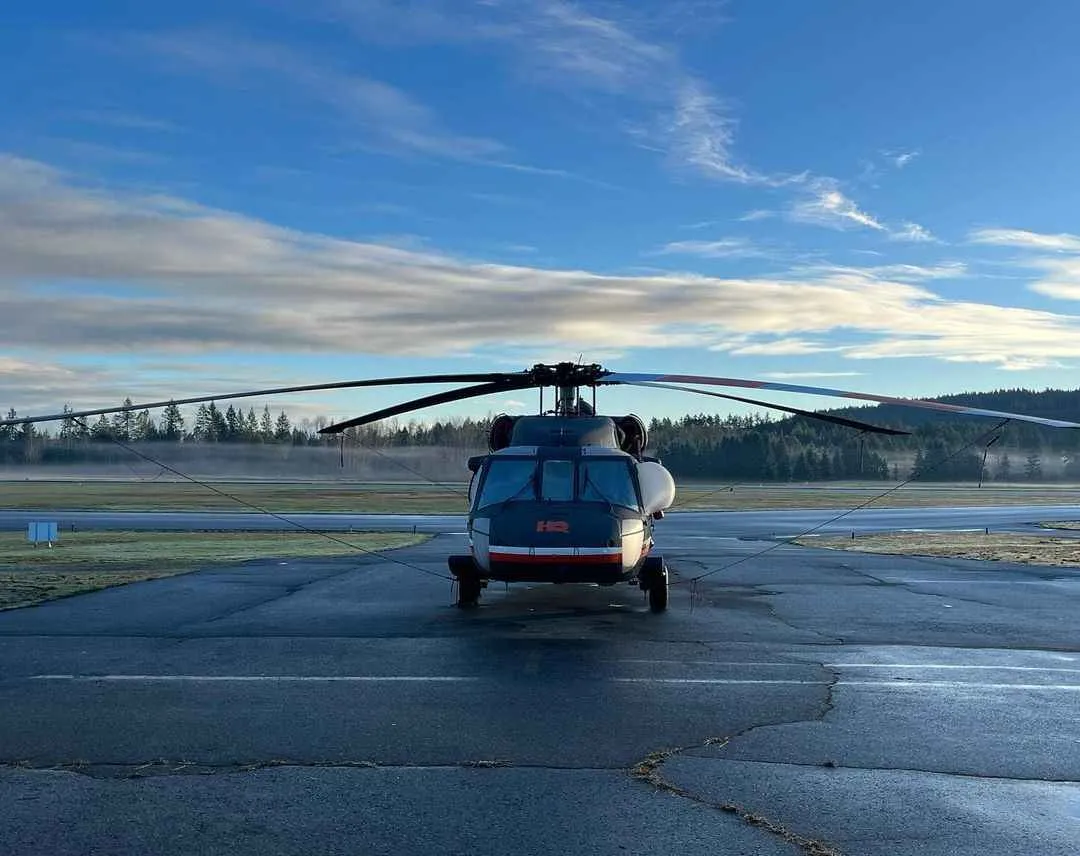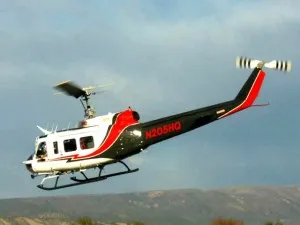


| Manufacturer | Bell Helicopter |
| Engine | Lycoming T53-17 |
| Maximum Horsepower | 1800 HP |
| Minimum Crew | 1 Pilot VFR |
| Passengers | 14 max. |
| Empty Weight | 5600 lbs. |
| Maximum Gross Weight External | 10,500 lbs. |
| Maximum Operating Ceiling | 20,000 PA |
| Maximum Rate of Climb | 2000 ft./min |
| Normal Cruise Speed | 100 knots |
| Range | 200 nm |
| Normal Fuel Consumption | approx. 90 gal./hour |
Specifications vary with atmospheric conditions.
The Bell 204 and 205 are the civil versions of the ubiquitous UH-1 Iroquois single-engine military helicopters. They are type-certificated in the transport category and are used in a wide variety of applications, including crop dusting, cargo lifting, and one of its most common uses, aerial firefighting.
Bell designed its Model 204 in response to a 1955 United States Army requirement for a utility helicopter. The 204 was a giant step forward in helicopter design, being one of the first to be powered by a turboshaft. The turboshaft engine radically improved the practicality of the helicopter due to its light weight and high power-to-weight ratio, lower fuel consumption, and lower maintenance and operating costs. The use of a turboshaft in the 204 allowed it to carry a useful payload over respectable ranges and at reasonable speeds, which resulted in the 204 and subsequent 205 becoming the most successful western helicopter series in terms of numbers built.
Commonly used for aerial firefighting, heliskiing and heli-seismic
The civil 204B was first delivered in 1961. The subsequent Model 205A-1 is equivalent to the UH-1H, which, compared to the 204, is longer, larger, and has better performance and a more powerful engine.
Over 60 civil Model 204Bs had been delivered by 1967, while further examples were built by Agusta-Bell up until 1973. 12,000 Model 205s (including civil 205A-1s) were built by Bell and Agusta-Bell up to the early 1980s. Numerous ex military 204s and 205s converted for commercial use.